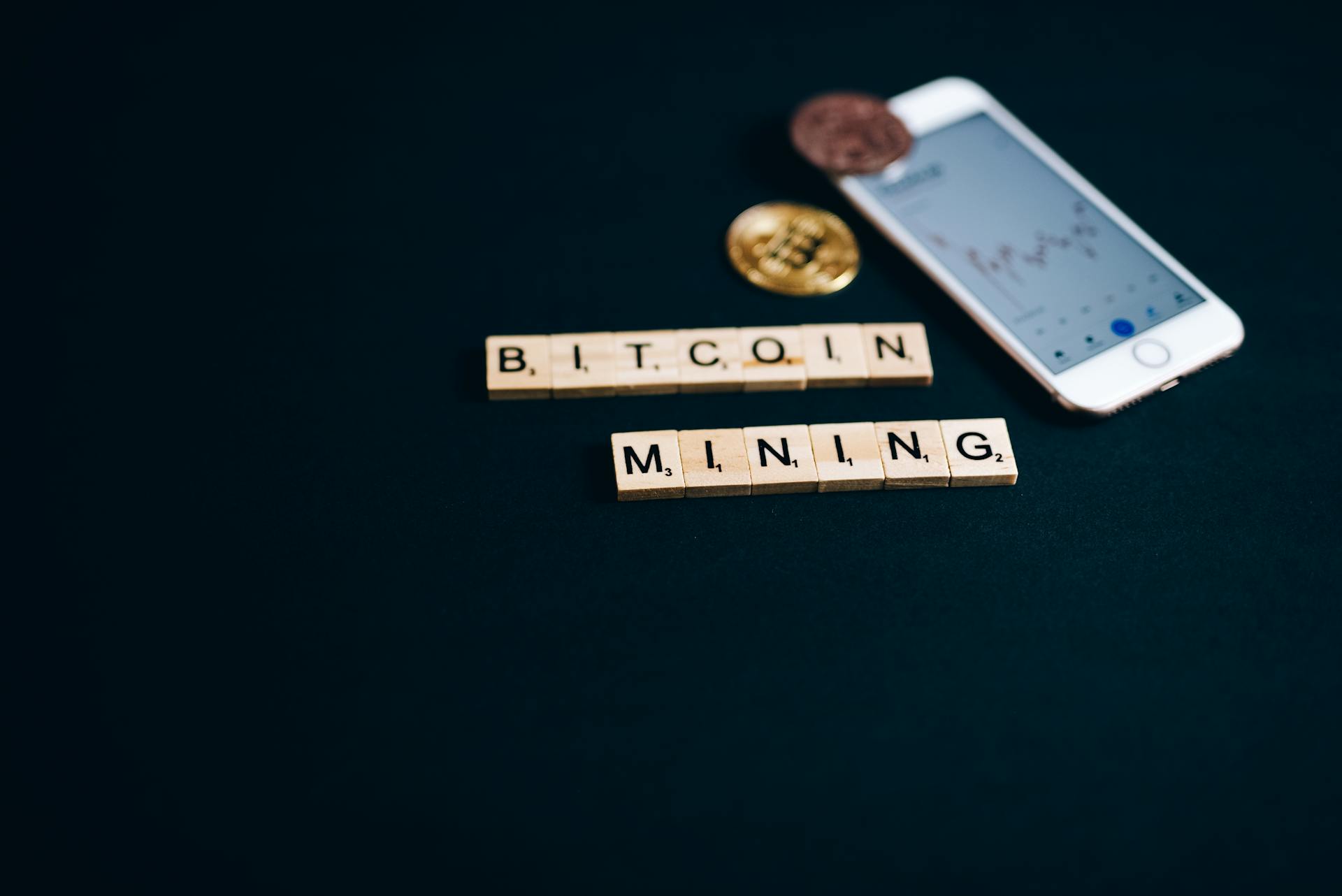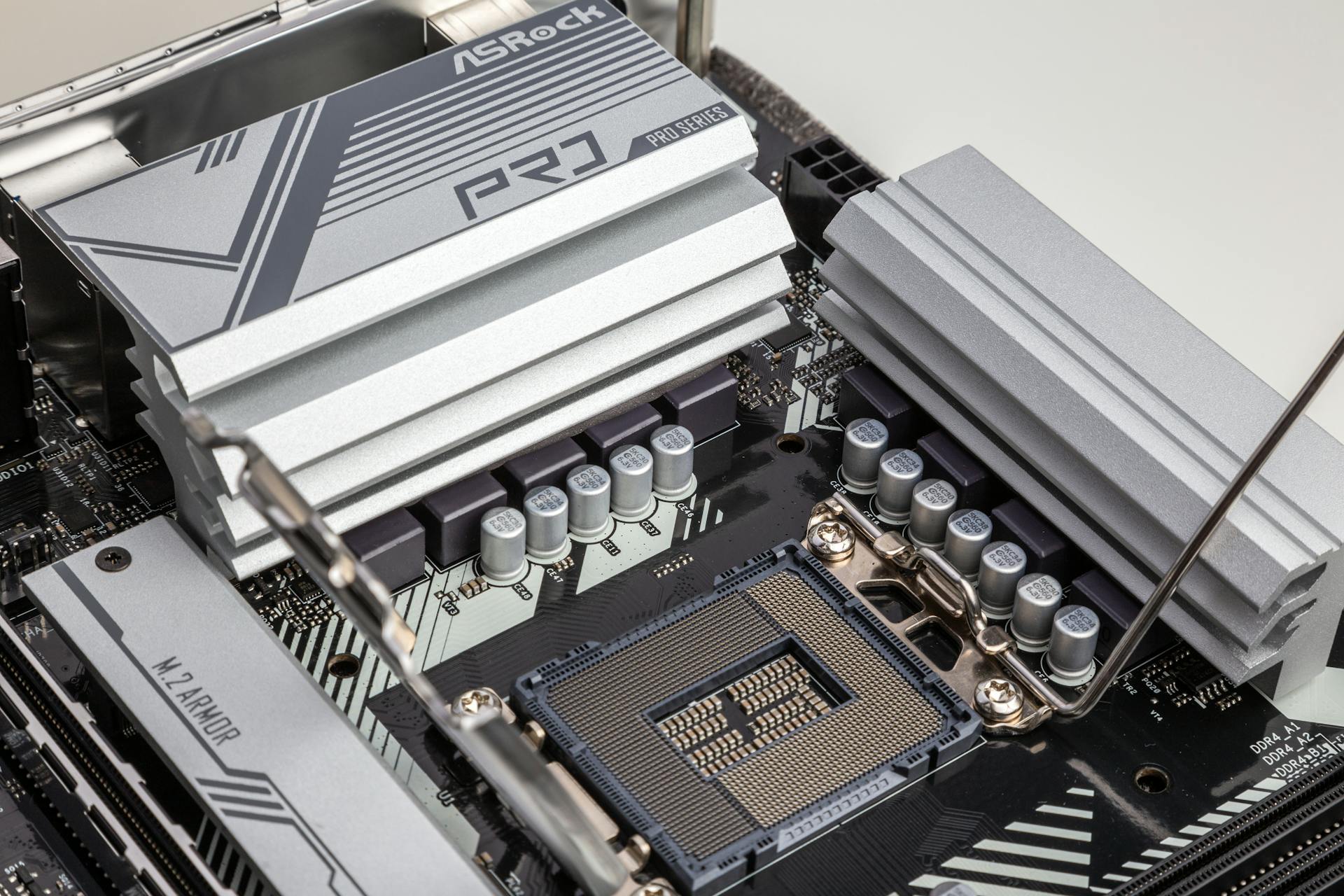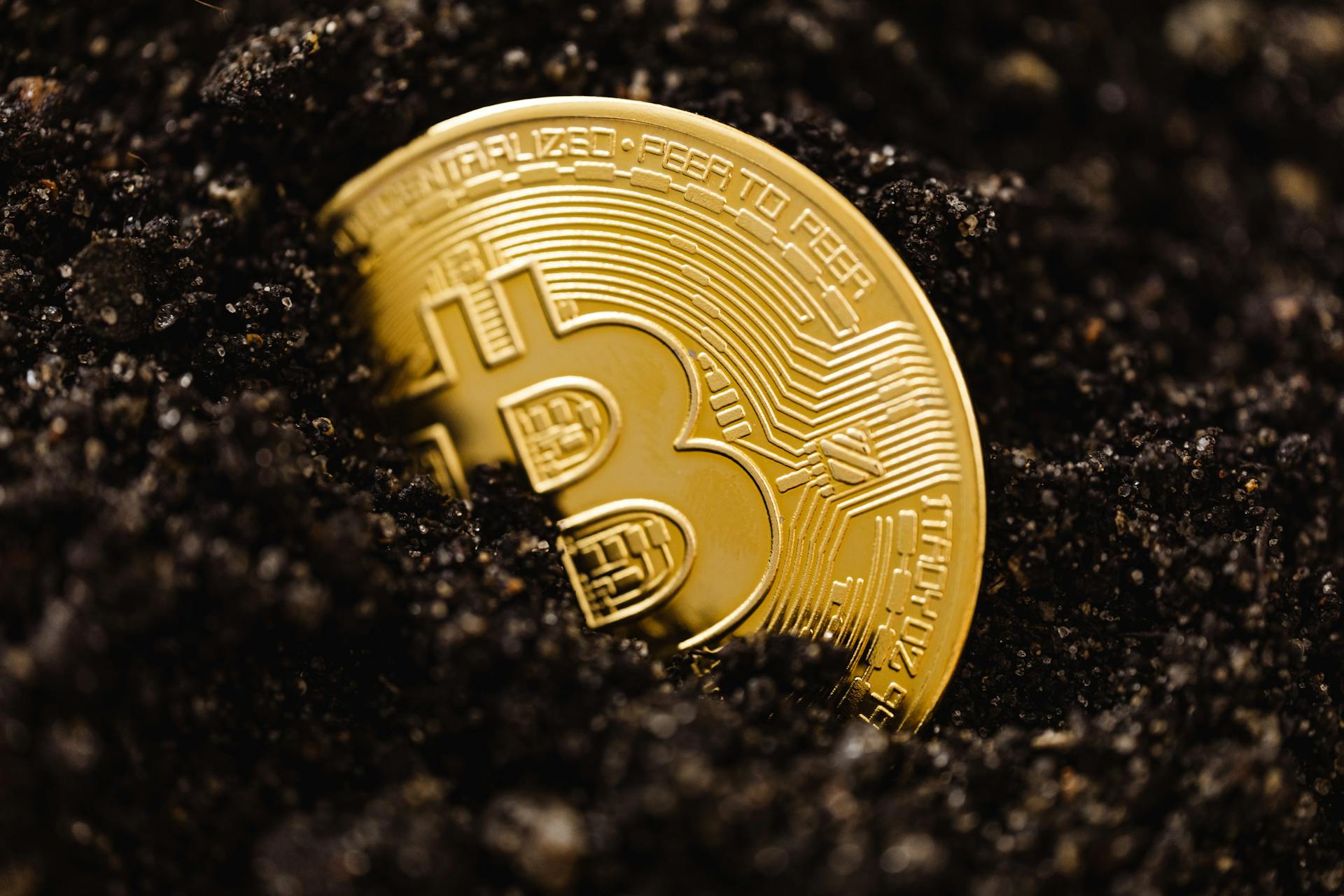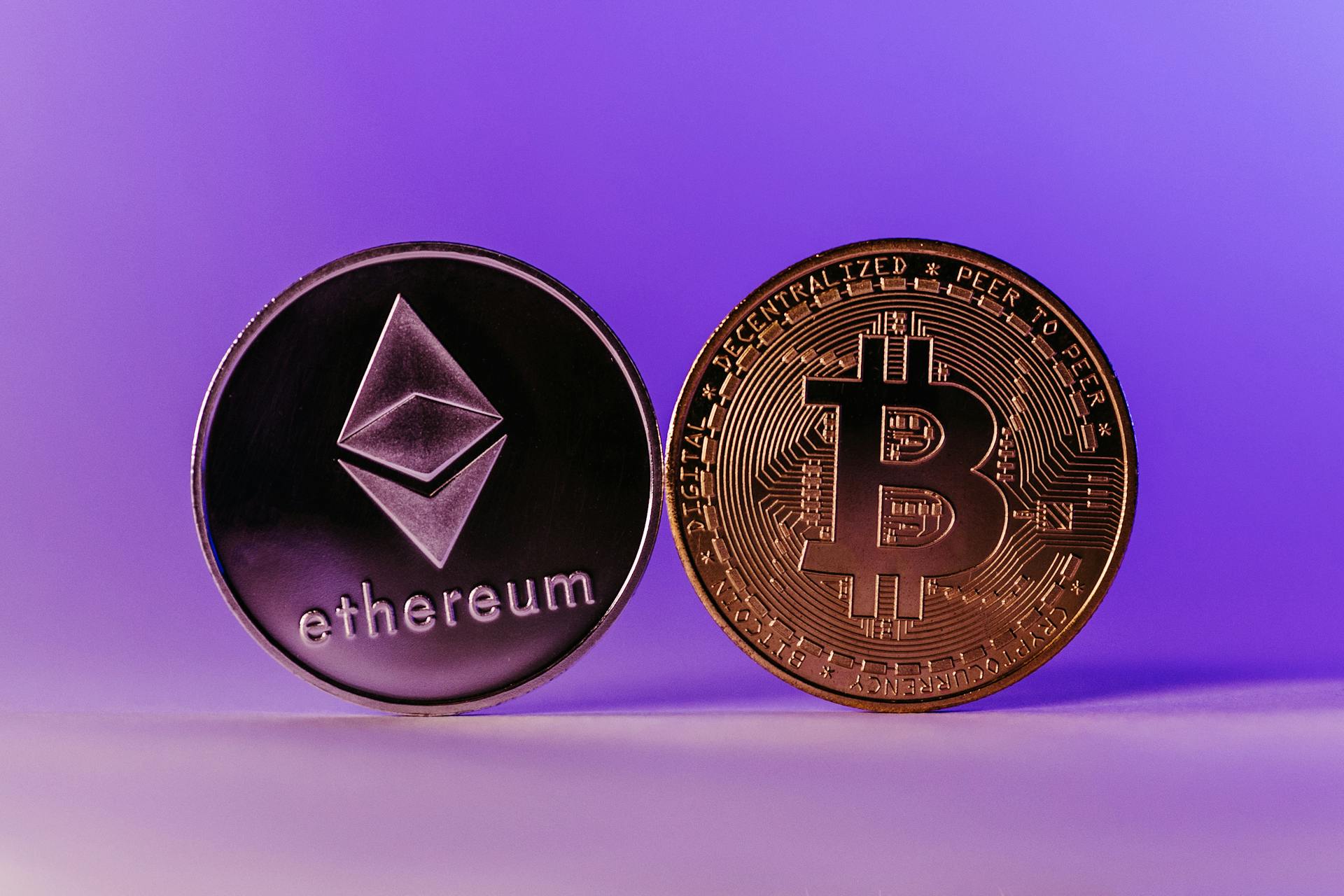
A mining pool is a group of miners who work together to solve complex mathematical problems and validate transactions on a blockchain, such as Bitcoin. This collective effort allows them to share the rewards and resources.
By combining their computational power, mining pools can solve problems faster and more efficiently than individual miners, increasing their chances of finding a valid solution. A mining pool is essentially a collaborative effort, where each member contributes their resources and shares the profits.
The process of mining involves solving complex mathematical equations, and the first miner to find a solution gets to add a new block of transactions to the blockchain and is rewarded with a certain number of newly minted coins.
See what others are reading: Miners for Cryptocurrencies
What Is It and How Does It Work?
A mining pool is a network of cryptocurrency miners that combine their processing power to mine crypto.
To join a mining pool, you connect your client to the pool, and the pool assigns work to you based on its criteria.
With a mining pool, you can expect to receive payouts based on the work your mining rig submits to the pool.
The work assigned by the pool requires less time on average to generate, compared to creating blocks on your own.
A share is awarded by the mining pool to the clients who present a valid proof of work of the same type as the block creation, but of lesser difficulty.
The reward is then split among the miners according to their processing contribution, providing a more regular income for smaller miners.
The average time to generate a block can be quite long, for example, almost 2 years with a mining speed of 1000 Khps and a difficulty of 14484.
On a similar theme: Current Bitcoin Block Reward
Mining Pool Methods
Mining pool methods can be divided into several categories. Proportional mining pools are one of the most common types, where miners receive rewards proportional to the number of shares they submitted for a block.
In proportional mining pools, miners contribute to the pool's processing power by sending shares of work until the pool finds a block. The rewards are then distributed based on the number of shares submitted.
Some mining pools use geometric methods, such as the Geometric Method (GM) and Double Geometric method. These methods involve setting parameters like f and c, and calculating scores based on the number of shares submitted.
The Geometric Method (GM) and Double Geometric method also involve updating the score for each worker based on the number of shares submitted and the block reward. The Double Geometric method adds a new parameter, o, which affects the cross-round leakage.
Here's a comparison of some mining pool methods:
Proportional
Proportional mining pools are among the most common methods used by mining pools, with a protocol that rewards miners based on the number of shares they submitted for a block.
In a proportional pool, miners earn shares until the pool finds a block, which marks the end of the mining round.
You might enjoy: Apartment Pools Open
Miners then receive rewards proportional to the number of shares they submitted for that block, calculated using the formula R=B⋅ ⋅ nN, where n is the amount of their own shares, and N is the amount of all shares in that round.
This means that all shares are equal, but their value is calculated only at the end of each round, making it a fair and transparent way to distribute rewards among pool members.
Recommended read: At Which Bitcoin Amount Do I Need Offline Wallet
Geometric Method
The Geometric Method is a mining pool method that was invented by Meni Rosenfeld. It's based on the idea of a fixed score for every new share, regardless of when it's submitted, eliminating the advantage of mining early or late in the round.
The method requires choosing parameters f and c, which represent the fixed and variable fee, respectively. These parameters are crucial in determining the payout structure.
To start a round, the score s is set to 1, and every worker's score Sk is set to 0. The parameter r is calculated as 1-p+pc, where p=1/D, and if the difficulty changes during the round, r needs to be updated.
You might like: How Many Satoshis Add up to 1 Btc
When a worker submits a share, their score Sk is updated by adding spB, and then s is multiplied by r. This process continues until a valid block is found.
Here's a simplified breakdown of the calculation:
The final payout for each worker is calculated as (1-f)(r-1)Sk/sp. This formula ensures that the payout is fair and consistent, regardless of when the share was submitted.
Check this out: Bitcoin Atm Milwaukee - Coinhub
Benefits and Features
Mining pools offer several benefits, including the ability to pool resources and increase the chances of successfully mining for cryptocurrency. This is especially important for smaller miners who may not have the resources to compete with larger mining farms.
Some of the key features of a mining pool include support for clusters of pools, each running individual currencies, and ultra-low-latency, multi-threaded Stratum implementation using asynchronous I/O. This allows for maximum performance and efficiency in the mining process.
A good mining pool should have features such as adaptive share difficulty, POW validation using native code, and session management for purging DDoS/flood initiated zombie workers. These features help to ensure the security and stability of the mining pool.
Here are some of the benefits of a mining pool:
- Less hardware and electricity costs for participants
- Increased chances of paying associated expenses and profiting
- Ability to work together to secure the Bitcoin network and get freshly mined bitcoins as a reward
Features
Mining pools offer a range of features that make them an attractive option for miners. One of the key features is the ability to support clusters of pools, each running individual currencies. This allows miners to diversify their mining efforts and increase their chances of success.
A notable feature of mining pools is their ultra-low-latency, multi-threaded Stratum implementation using asynchronous I/O. This results in faster and more efficient mining operations. I've seen firsthand how this can make a big difference in the profitability of mining operations.
Mining pools also offer adaptive share difficulty, which is designed to ensure that miners receive a fair share of the rewards. This is achieved through a feature called "vardiff", which adjusts the difficulty level based on the number of participants. This helps to prevent any one miner from dominating the pool and ensures that everyone has an equal chance of success.
In addition to these features, mining pools often include payment processing and banning systems to prevent cheating and ensure that rewards are distributed fairly. Some pools also offer live stats APIs and WebSocket streaming of notable events, such as blocks found and payments made. This provides miners with real-time information and helps them to make informed decisions about their mining operations.
Worth a look: Bitcoin Mining Difficulty
Mining pools can run on a variety of platforms, including Linux and Windows. They also offer POW (proof-of-work) and POS (proof-of-stake) support, which allows miners to participate in different types of mining operations. Detailed per-pool logging is also available, which provides valuable insights into the performance of the mining pool.
Here are some of the key features of mining pools:
- Supports clusters of pools each running individual currencies
- Ultra-low-latency, multi-threaded Stratum implementation using asynchronous I/O
- Adaptive share difficulty ("vardiff")
- PoW validation (hashing) using native code for maximum performance
- Payment processing
- Banning System
- Live Stats API on Port 4000
- WebSocket streaming of notable events like Blocks found, Blocks unlocked, Payments and more
- POW (proof-of-work) & POS (proof-of-stake) support
- Detailed per-pool logging to console & filesystem
- Runs on Linux and Windows
Support
If you need help with using MiningCore, don't worry, support is available. You can get commercial support directly from the maintainer at miningcore.pro.
The first step to getting support is to create a configuration file called config.json. This file is described in detail on the miningcore.pro website.
Frequently Asked Questions
Is a mining pool profitable?
Joining a mining pool can increase your chances of profitability by reducing hardware and electricity costs, making it a more feasible option for miners
What is the best mining pool?
The best mining pool is Prohashing, known for its flexibility in payout currency and daily payouts with no minimum threshold for popular coins like BTC and ETH.
Featured Images: pexels.com


